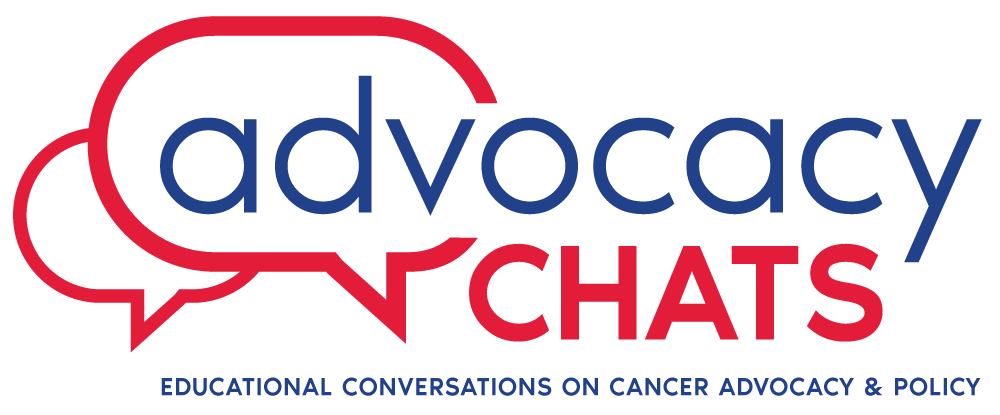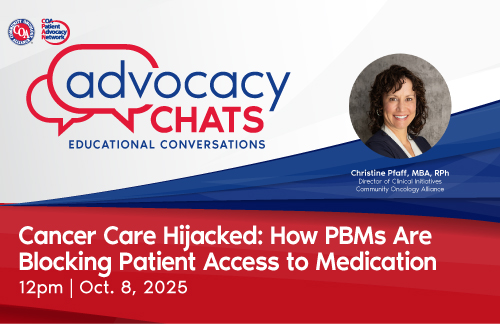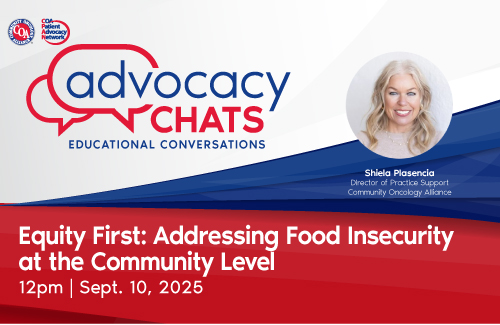Equity First: Addressing Food Insecurity at the Community Level
Meeting the physical needs of people with cancer goes far beyond medicine or doctor visits. If you or someone you love is battling cancer, you know how much energy goes into managing side effects, keeping up with appointments, and handling everyday finances. Yet for too many, a basic need falls through the cracks: having enough healthy food. Food insecurity—a silent hardship—can make a tough cancer journey harder.
September is National Hunger Action Month, and there’s no better time to examine how community oncology practices are helping patients navigate not only their cancer care, but also the challenge of putting nutritious food on the table. Here’s how these local cancer clinics are working to advance health equity, one meal at a time.
Understanding the Urgency of Food Insecurity in Cancer Care
Food insecurity means not having reliable access to enough affordable, nutritious food. It’s more complex than hunger. Patients may live miles from the nearest grocery store, struggle with the cost of fresh produce, or lack transportation to shop for food. The uncertainty goes beyond rumbling stomachs; it triggers anxiety and can derail recovery.
People with cancer often face dramatic weight changes. Some lose weight due to illness or side effects, while others may gain weight because of certain medications. Either way, nutritious food is a key part of care. No cancer patient should have to worry about what’s for dinner when they’re already fighting for their lives.
But the connection between food access and cancer outcomes runs even deeper. When you look at the reasons families skip meals or buy less healthy food, the problem ties back to the broader social determinants of health: income, housing, education, and the environment around them. These issues together shape health, sometimes as much as the treatment itself.
Why Food Insecurity Is a Health Equity Issue
Health equity means everyone gets a fair and just chance to be healthy, no matter their background, income, or where they live. But food insecurity does not impact everyone the same way. Low-income families, people in rural areas, and many racial or ethnic minorities are at higher risk. If a patient’s zip code or salary means they’re more likely to face poor nutrition during cancer treatment, we’re looking at systemic injustice—not individual failure.
Fairness in cancer care demands that we address these disparities. No patient should face worse outcomes just because they live in the “wrong neighborhood” or earn a lower wage. This is why food insecurity is not just a nutrition problem but a core health equity challenge.
How Community Oncology Practices Address Food Insecurity
Community oncology practices aren’t just places to get chemotherapy or meet with a doctor. They’ve become the front lines for identifying and addressing food insecurity. Because they’re part of the neighborhoods they serve, they see patients more often and have the trust needed to spot trouble early.
Why Community Oncology Is Uniquely Positioned
- Frequent Visits: Patients often see their care teams multiple times a month. This frequency means staff notice weight changes or missed appointments quickly.
- Trusted Relationships: These practices are woven into local life, which makes it easier for patients to share personal struggles like food insecurity.
- Connections to Local Resources: Embedded in the community, these clinics know about local food banks, charities, and support systems.
Screening for Food Insecurity
Spotting food insecurity isn’t always obvious. Patients may not want to admit they’re struggling to buy groceries, especially when answering direct questions can feel embarrassing or intrusive. That’s why practices use different approaches:
Common Screening Methods:
- Intake questionnaires about social determinants of health, which include questions like, “Do you have regular access to enough food?”
- Private conversations with social workers trained to ask about food needs in a respectful, nonjudgmental way.
- Referrals to nutritionists or dietitians when nutrition becomes a concern during treatment.
Referral Pathways:
- Patients may check a box on a paper or digital form.
- Care teams keep an eye out for physical signs or casual remarks that suggest someone may be struggling.
- Once a need is identified, the practice refers the patient to a social worker or directly to food support resources.
Building trust and having regular check-ins help patients feel more comfortable sharing their needs.
Local Support Systems and Interventions
Every community is unique. That’s why community oncology centers tailor solutions based on what their neighbors need. Here are standout examples:
On-Site Food Pantries
Some practices offer food pantries right in the clinic. Patients receive two weeks’ worth of nutritious food at a time, coordinated with social workers and nutritionists to meet their specific dietary needs.
Why it works:
- Immediate and convenient—patients don’t need to travel elsewhere.
- Reduces stigma since everyone is addressing food needs together.
- Supports dignity by making it a normal part of care.
Food Prescription Programs
These innovative efforts let doctors “prescribe” produce or other healthy foods, much like they would medicine. Patients not only receive food but also education about nutrition, cooking, and the important role of diet during treatment. These programs often draw funding from grants or local foundations.
Transportation Support
Mobility can be a hidden barrier. Volunteers with organizations like the American Cancer Society help drive patients to medical appointments and, in some cases, to grocery stores or deliver food directly to their homes. This is especially important in rural communities where resources are spread thin.
Community Collaborations
Local businesses step up, too. For example, some restaurants donate a percentage of sales from a specific menu item (like a breadbasket) to cancer center food banks. These creative partnerships build community spirit and raise money for critical food programs.
Breaking Barriers: Normalizing the Conversation About Food Needs
Admitting that you’re struggling to keep the fridge stocked is hard—especially when you’re already dealing with cancer. Many patients stay silent, worried about judgment or feeling like a burden. This silence can hide growing needs.
By making questions about food security a routine part of intake—just like checking temperature or blood pressure—practices help patients feel more comfortable speaking up. Regular conversations break down the shame that can trap patients in hunger.
Example: A nurse noticed snacks in the clinic waiting area disappeared faster than usual. Patients quietly tucked away extra granola bars and cheese sticks to take home. This silent signal pushed the staff to set up a mini-fridge and provide even more ready-to-eat foods—meeting a need most patients were too embarrassed to voice.
Seeing that others share the same struggles helps patients feel less alone. In-house food pantries and open conversations also relieve the extra stress of needing to “go somewhere else” for help, letting patients keep their dignity during a challenging time.
Taking Action Today: Practical Steps for Everyone
The big picture can feel overwhelming, but there’s plenty that individuals and health care teams can do to help fight food insecurity—starting now.
Everyday Ways to Make a Difference:
- Start the conversation: Ask patients, neighbors, or colleagues how they’re doing with food. Making this part of routine talk breaks down stigma.
- Support local food banks and gardens: Volunteer for a few hours a month or donate what you can. Small actions add up.
- Champion routine screenings: Encourage your clinic or practice to include food insecurity questions during patient intake.
- Share stories: Personal patient stories are more memorable to policymakers than statistics alone. If you see the impact of food insecurity, speak up and help others understand the real human cost.
Simple volunteer idea: Some families spend a couple of hours each month at a food bank. One story described labeling cans on a conveyor belt, an easy but meaningful way to help.
Community partnerships can help with funding and sustainability. Local foundations, grants, and creative collaborations (like restaurants donating proceeds) keep programs running. Each clinic can design approaches that work best for their setting, guided by community needs and resources.
Moving Upstream: Tackling the Root Causes Through Advocacy
Filling bags with food in the clinic helps today, but lasting change means fixing the causes of food insecurity. That requires upstream action—solving problems at the source before they cause more harm.
What Does Upstream Action Mean?
Instead of waiting until someone is hungry, upstream action looks at the bigger causes:
- Poverty that means Social Security or paychecks do not stretch far enough.
- Food deserts, where the nearest grocery store is miles away.
- Lack of transportation, making simple trips to buy groceries hard or impossible.
- Difficult housing situations.
Focusing only on emergency fixes keeps us stuck passing out food bags forever. Investing in smart transportation, supporting living wages, or encouraging stores to open in under-served areas creates longer-lasting solutions.
How Advocacy Makes a Difference
Policy change happens when people speak up. You don’t need to be a lobbyist or expert. Reach out to your local representatives and explain why programs like SNAP (food stamps) or Medicaid nutrition benefits matter. Every story makes a difference. Lawmakers remember the faces and families described by advocates more than they remember numbers.
Add your voice. Share stories, email policymakers, and connect with advocacy efforts. Health care professionals, caregivers, and patients all have real influence.
Spotlight on the Patient Centered Innovation Committee
What began as the Health Equity Committee at the Community Oncology Alliance has now grown into the Patient Centered Innovation Committee. Formed in response to ongoing disparities in health outcomes, this committee brings leaders together to brainstorm, share best practices, and hold workshops that help clinics better serve their patients.
Recent projects include advancing patient navigation (helping guide patients through complex treatment) and piloting new ways to tackle food insecurity. The committee’s expanded focus now includes any innovative ideas that help improve patient lives.
Food as Medicine: Why Nutrition Is Essential for Cancer Care
Nobody can fight cancer on an empty stomach. A sense of humor helps—everyone’s been “hangry” at some point—but hunger is serious business in cancer care. Nutritious food isn’t just comfort, it’s medicine. Treatment schedules don’t pause when food is scarce, so addressing food insecurity is urgent.
You can’t fight cancer on an empty stomach. Health equity starts with access to healthy food.
Community oncology teams, advocates, and volunteers know this truth. Working together, sharing stories, and supporting food access turns awareness into real change. It’s up to all of us to keep this momentum, so that no patient ever has to fight cancer while struggling to get enough to eat.
Conclusion
Food insecurity isn’t just a symptom of poverty or tough times—it directly affects whether cancer patients live or die, recover or relapse. When community oncology practices, local businesses, volunteers, and advocates come together, they do more than hand out meals. They restore dignity, remove hidden barriers, and make fair health outcomes possible for everyone.
Take action this month and beyond. Talk about food needs. Volunteer or donate. Share stories. And remember: nourishing hope starts with a full plate and a helping hand.
CPAN Advocacy Chats are regular virtual 30-minute educational conversations about cancer advocacy and policy with a guest speaker invited to discuss issues important to patients and advocates. Summaries of previous Advocacy Chats are available on the CPAN website.
Past Advocacy Chats





